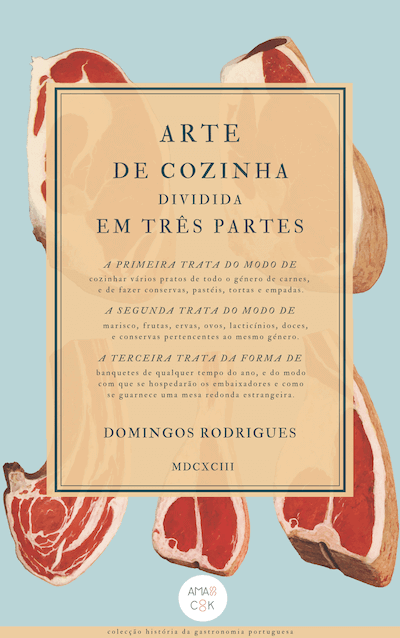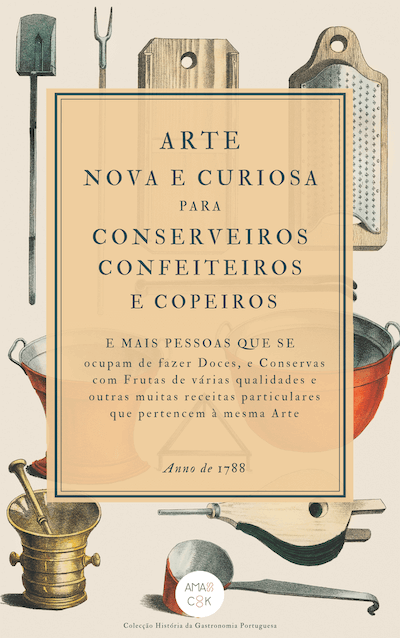Quite a few years have passed since we first started searching for documents connected to cooking, in particular when related to Portuguese cuisine (but not exclusively). From the classic Portuguese cookbooks to those more obscure, or even small manuscripts, menus, and culinary magazines; we’ve ferreted for curious recipes and traditions far and wide. Along the way, we’ve found some precious rarities that we hope to safe-keep for years to come.
Amidst this quest for old documents, we noticed how relatively inaccessible and poorly widespread most pre-mid-20th century Portuguese cooking literature really is. That being said, and considering that the relevance of historical cooking literature is indisputable and that Portugal is keen on celebrating its roots, where exactly is The Lusiads of Portuguese gastronomy?
Discontented, we took it upon ourselves to overcome the scarcity from which most old and seldom edited books suffer and bring them into digital format, with some updating and better usability. We hope this may help those who love to cook to explore these recipes and ingredients from yesteryear, and hopefully, to try out these dishes for themselves.
To premier this collection, we chose three books. Actually, two books and one manuscript. Three books that were written in three different centuries, and represent distinct cuisines.
Manual de Cozinha da Infanta D. Maria
The first — “Manual de Cozinha da Infanta D. Maria” — is the oldest known Portuguese culinary manuscript. Throughout 67 recipes, it unfolds the treasures of medieval cookery in the privileged classes. A cuisine full of bold recipes, opulent in spices, and often lacking a clear distinction between what is sweet and savory. Learn more about this book here.
Arte de Cozinha - Domingos Rodrigues
The second — “Arte da Cozinha” — was written by Domingos Rodrigues in 1680, and was the first cookbook to be printed in Portugal. This 300+ recipe culinary medley still manifests some influence from medieval cuisine, however, enriched by the flavors of the Portuguese Discoveries, and shows the dawn of foreign influence. Find out more here.
Arte Nova e Curiosa para Conserveiros, Confeiteiros e Copeiros
And at last, the third book — “Arte Nova para Conserveiros, Confeiteiros e Copeiros” —was published in 1788, and was never signed by its author. It was the first pastry book to be printed in Portugal. It covers multiple pastry and confectionery recipes, as well as some conventual and regional pastry. The recipes are surprisingly detailed in comparison to most books of the same period, showing the author’s concern in giving accurate directions for the best results. It’s worth finding out more about this book here.
The reading of any of these books requires an approach to an unknown language. Be it by the long-gone measuring units or the differently named ingredients and utensils. There are even ingredients that have now almost but completely disappeared but could then be found in most recipes.
All this must be taken apart to make sense in today’s perspective. Facing many of these recipes with a contemporary outlook is probably the most surprising discovery of the whole process. For instance, if we look at the historical concepts of sweet and savory, which do not obey our current standards, we might believe that at times the boundaries in flavors were a little less conservative than they are today. Or were they?
In order to make this legacy more approachable, we’ll be making a series of videos of our own adventures with some of the most curious and fascinating recipes. We can’t really promise that it’ll all go well… but we’ll chase after the musk and the amber if we have to.
Stay alert, because we will soon be launching more editions of Portuguese cookbooks that made history. Until then, make your own experiments and tell us how they went, either here or on our social media. We’ll be waiting!




